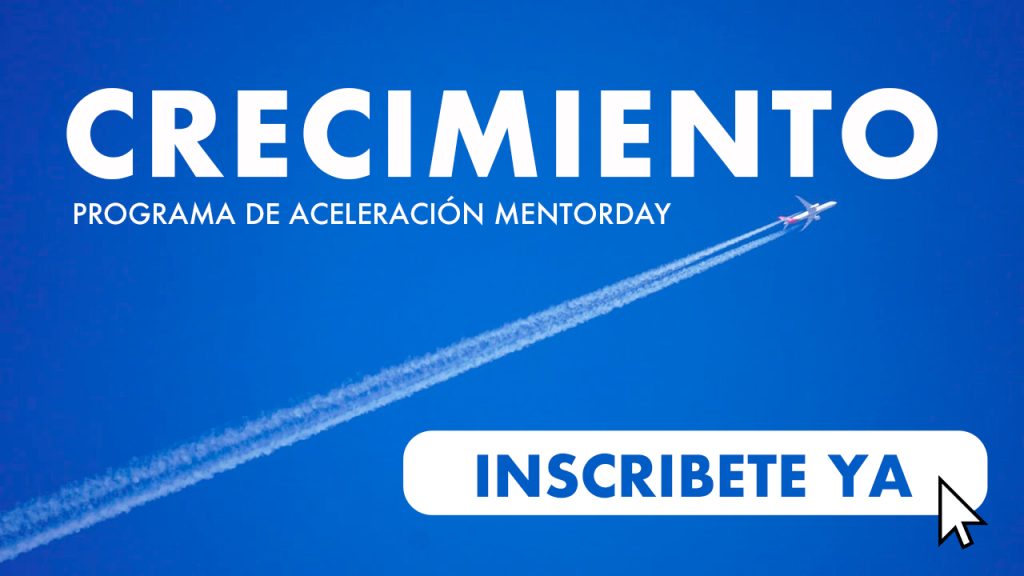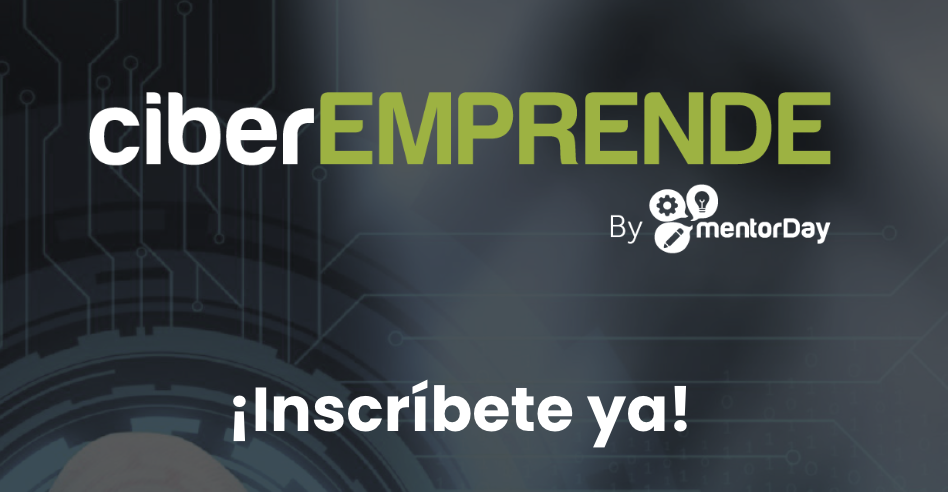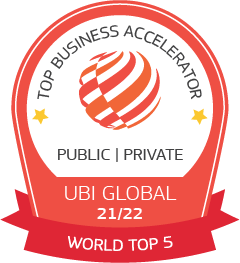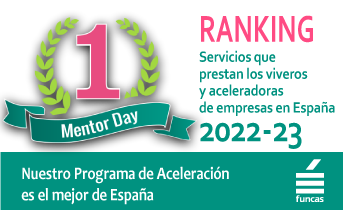MINIMUM VIABLE PRODUCT (MVP)
Accelerate your business with these expert tips on "Minimum Viable Product (MVP)". Analyse and discover this TIP!
To validate hypotheses using minimum viable products (MVP), the following steps can be followed
- Identify the hypotheses to be validated: It is important to be clear about the hypotheses to be validated, whether it is about the customer segment, the problem to be solved, the solution to be offered, the revenue model, among other aspects.
- Define the PMV: a minimum viable product or service must be designed to test the selected hypotheses. This MVP should have the basic characteristics to be validated and should be as simple as possible to minimise costs and time.
- Launching the LMP on the market: the LMP should be launched in the market and feedback from customers should be collected to validate or refute the hypotheses put forward.
- Analyse the results: the results obtained must be analysed, compared with the initial hypotheses and decisions must be taken to improve the product or service and adjust the business model.
It is important to remember that the objective of the LMP is to validate hypotheses with the least possible investment of time and resources. It is therefore important to focus on the essentials and not try to create a complete product from scratch. In addition, be open to the results and be willing to adjust the product or even change the direction of the business. if the results indicate that this is necessary.
Examples of VMPs created to validate hypotheses
HERE ARE SOME EXAMPLES OF PPMV CREATED TO VALIDATE HYPOTHESES:
- Dropbox: To validate their hypothesis that people were willing to pay for cloud storage, Dropbox created a PMV that allowed users to sync a file across multiple devices. They then focused on the most popular features and expanded their product.
- Zappos: To validate their hypothesis that people would be willing to buy shoes online, Zappos started with a PMV that involved taking photos of shoes in local shops and posting them online. When a customer placed an order, Zappos would buy the shoes from the local shop and ship them to the customer.
- Groupon: To validate its hypothesis that people would be willing to buy discounts online, Groupon started with a VMP that consisted of sending a daily email to a small group of people in Chicago offering a discount at a local business. If enough people bought the discount, Groupon would activate the offer.
- Airbnb: To validate its hypothesis that people would be willing to rent out rooms in their homes to strangers, Airbnb started with a PMV that allowed users to post photos of their rooms and rent them out on a short-term basis. When the PMV proved successful, Airbnb expanded its product to include more features.
These are just a few examples, but the idea is to create a PMV with the essential features of your product or service to validate your assumptions before investing large amounts of time and money in its full development.
Tips for an entrepreneur to create VMPs to validate their hypotheses
HERE ARE SOME TIPS ON HOW TO CREATE AN EFFECTIVE PMV TO VALIDATE YOUR BUSINESS HYPOTHESIS:
- Identify key assumptions: define the assumptions you have about your business model and what aspects you need to validate to make sure you are on the right track.
- Focus on core functionality: create a product with the core functionality that solves your customer's problem in a simple and efficient way.
- Design a simple interface: choose an interface that is easy to use for potential customers and does not require a great deal of effort to learn.
- Create a landing page or prototype: use tools such as Squarespace, WordPress or even Power Point to create a simple prototype of the product and make it available to users.
- Test your PMV: share your product with a small sample of your potential customers and get their feedback, preferably with one-to-one interviews to deepen your understanding of their needs and suggestions.
- Analyse the results: review the data collected through customer feedback and use this information to improve your LMP. Repeat this process until your hypotheses are validated.
Remember that the VMP is a product that is designed to be improved, not to be perfect from the start.
The Minimum Viable Product (MVP) is a product development strategy that focuses on bringing to market a product with the minimum characteristics necessary to satisfy customer needs. In this way, it is possible to validating product acceptance in the market and collecting feedback to improve the product before releasing a full version. The VMP focuses on minimising product development time and costs, while gaining valuable information for decision making. The aim is to offer a product with basic functionality for customers to test and give feedback to identify the strengths and weaknesses of the product.
A PMV can be a simplified version of a product, a mobile application with limited functionalities, a prototype, a video demonstration, among others. The main objective is to validate the need and viability of the product in the market.
SOME OF THE BENEFITS OF THE PMV ARE:
- It reduces the risk of failure by launching a complete product on the market without prior feedback.
- Reduces product development time and costs.
- It allows entrepreneurs to focus on critical product features and functionalities.
- It provides a customer-centric approach, which increases the likelihood of market success.
In short, PMV is a strategy for launching products with the minimum characteristics necessary to validate their viability in the market, which reduces the risk of failure and increases the probability of success. It is one of the foundations on which the methodology was born. Lean Startup (+), and one of its most interesting contributions. It is used to quickly test quantitatively and qualitatively the market response.
An MVP has only that functionality required to show the product to the customer and its main objective is to avoid developing products that customers do not want. And, to maximise the information obtained, based on the cost and effort invested, about the customers. Despite the name, MVP is not just about creating a product. It is a strategy and process focused on creating and selling a product to a group of customers. It is a iterative process from idea generation, prototype development, presentation, data collection, analysis and learning. If the goal is simply to create something fast, an MVP itself is not really necessary.
In most cases, a MVP requires additional efforts to invest time in talking to customers, defining metrics and analysing results. It contains only the minimum functionality required to learn and is focused on a certain type of customers. Which in principle they are more tolerant, are more willing to provide feedback y are better able to understand the product vision with only a prototype or basic product information. In addition to, help fill the 'gaps', in the desired functionality.
There is no exact formula for defining an MVP. It requires a certain level of judgement and depends on the context of the product. The biggest waste in creating a product is to build something that no one wants! An MVP seeks to verify that the product effectively solves a market need before having to invest too many resources in its development.
"What we try to do is to reduce uncertainty and find out exactly what product our customer wants".
BENEFITS OF THE MINIMUM VIABLE PRODUCT
CREATING A PPMV CAN HELP YOU TO:
- Launch a product or service that is really needed.
- Create something that people want to pay for.
- Invest your time and money in something that you know is likely to work.
- Learn from mistakes and see the successes.
Access to the first business and coworking centre in the Canaries (see+)MentorAdvisor gives you easy access to Europe, Africa and America with the help of more than 400 experts. With MentorAdvisor we provide you with direct contact with centres all over the world (consult +). The companies installed in our centre benefit from support services and advice from specialists.
COMPLETE THE TIP BY LOOKING AT THIS VIDEO!
APPLY THIS TIP TO YOUR PROJECT
QUIZ
- 💻 PRACTICE with an expert in the next practical webinar.
- 🔎 CONSULT more related TIPs with this same theme.
- 📖 AMPLIA your knowledge by downloading this EBOOK.
THINK ABOUT YOU
- 🚀 IMPULSA your company in the next acceleration programme, ¡book your place now!.
- 🥁 PRACTICE with your project in this practical webinar, ¡apply for your place!.
- 🌐 CONTACT with other entrepreneurs and companies, ¡register and take part in the next Networking!
THINK ABOUT HELPING OTHERS
- 🤝COLLABORATE as a volunteer: expert, mentor, inverter, awarding, Spreading the word, challenging, innovating, creating a TIP...
- 💬 RECOMMENDS this programme to reach out to more entrepreneurs by Google.
- 👉 SHARE your learning!
- 📲 SEND this TIP 👇
Rate this TIP!
Click on the stars to rate
Rating "40" - Average " - Average4.8"
No votes yet, be the first to vote!
We are sorry you did not find it useful.
Help us improve this TIP!
Leave us a comment and tell us how you would improve this TIP











[...] For this purpose, the so-called "minimum viable product" (MVP) is often used. In addition, you can use questionnaires, both targeted and [...]
Key point: MVP is a focused strategy and process.